
Me: “This next position is called ‘bird on a perch.’ Place your arches on the bar and gently wrap your toes over while you reach your heels under.”
Student: “Okay…oww, wait, my toes are cramping…”
Me: “That’s actually pretty common, shake it out and try it again. Maybe use your toe muscles less…”
As a Pilates and YTU® teacher, one of the first things I notice is how my students use their feet. This is especially true when I have a new student on the Reformer for their first series of “Footwork”. Traditionally, this is the first series performed in a Reformer session, for both beginning and seasoned practitioners and is a way of warming up and checking in on the whole body.
For the uninitiated, the movement looks like a squat – except you are lying down and spring-loaded resistance is taking the place of gravity and body weight.
Sounds simple, right? Well, like a well-executed squat, there are a few pieces that need to line up correctly, starting with the feet and ankles.
The feet are standing on the bar in various positions – “Pilates first” – toes on the bar, feet in a small V position, heels a little lifted, “Bird on a perch” – arches on bar, heels reach under, toes reach over, “Heels” – long, relaxed toes with strong, even dorsiflexion at ankle. Each position is challenging in it’s own way, but it’s the last two that are often the hardest. What I usually see are toes that are going crazy – either cramping up or splaying wildly -and the ankles can’t quite maintain full dorsiflexion.
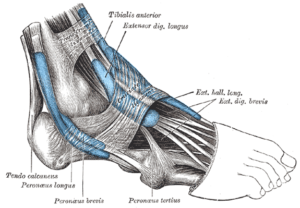
What’s going on here? Repeat after me.
Extensor Digitorum Longus
Extensor Digitorum Longus
No, this is not some Harry Potter-esque spell, but the fancy latin name for the muscles that pulls the toes up toward the face. Extensor = lifts, digitorum = toes, longus = this muscle actually originates on the top of your shin!
The extensor digitorum longus (EDL) is actually involved in two other important foot actions besides lifting your toes: dorsiflexion of the ankle (pulling the front of the foot upward) and everting the ankle (lifting the outside of the foot).
Between flip-flops and “positive” heeled shoes (even 0.5 inch counts), much of our footwear put this muscle in a chronically shortened position, over-stretched position, or both.
Have you ever had a cramp when you point your toes? Or have an upward bend in the toes where they meet the top of your foot even when your feet are “relaxed” (also know as Hammer Toes)? Even shin splints. Tightness and/or weakness in this muscle might be to blame.
The EDL can also take over for the other muscles that dorsiflex and evert your foot – this is especially true if you like to wear shoes that don’t allow the muscles on the back of the calf to fully lengthen.
In other words, tight calves might often go along with tightness on the top of the feet and the shins. Getting strong, supple ankles might require a more thorough approach than just stretching your calves and doing calf raises.
Come back on Friday for some amazing YTU releases and strengtheners for this hard working muscle and get the spring back in your step.
Sources:
- Bishop, G. (2103 December 30). Standford’s distinct training regimen redefines strength. http://www.nytimes.com/2013/12/31/sports/ncaafootball/stanfords-distinct-training-regimen-redefines-strength.html
- Calais-Germain, B (1993). Anatomy of Movement. Seattle: Eastland Press.
- Kendall, F.P. ; McCreary, E.K; Provance, P.G.; Rodgers, M.M.; Romani, W.A. (2005). Muscles Testing and Fuction with Posture and Pain, 5th Edition. Baltimore: Lippincott William & Wilkins.
- Miller, J. (2014). The roll model: A step-by-step guide to erase pain, improve mobility, and live better in your body. Las Vegas: Victory Belt.
- Common Peroneal Nerve Palsy Following Inversion Ankle Injury: A Report of Two Cases. Mark D Stoff and Andrew F Greene. PHYS THER. 1982; 62:1463-1464.


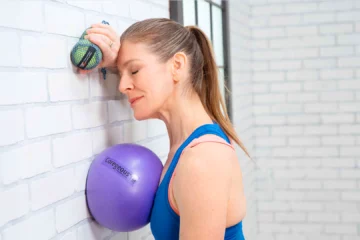
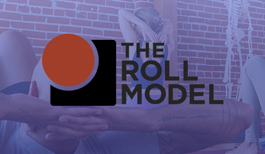



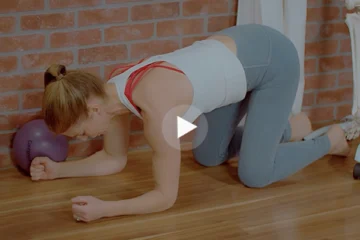
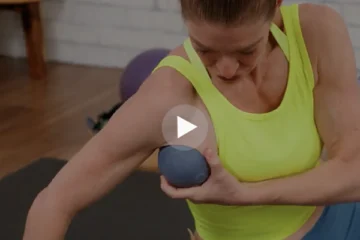


It’s great to see some focus on the feet. I work with runners and believe footwork is important. Though for many runners that I come across, this part of the body isn’t given much attention outside of running.
Thanks for bringing attention to the toes and ankles. Often overlooked in most standing poses, they are the foundation of proper alignment, function, and mobility. It is no surprise how much my toes cramp up when I ask them to work, since they are often neglected.
Great article! I’m still, and will always be, in a learning process, but I don’t quite understand the roles and actions of the muscles of feet and ankles, unless I have my anatomy books beside me. your article helped me a lot! I know how important foot mobility is, but now, I’ll be able to explain a bit better why and how.
Great article! I have those problems of shin splints and foot cramps when I point the toes. Looking forward to seeing your rolling suggestions.
Great article! I too am a Pilates instructor and have that same conversation with newer people to the reformer Footwork. I’ve found doing a gentle YTU ball sequence on the feet before Footwork can help warm up the foot before being loaded with resistance which seems to help with “Birds on a Perch” and “Heels”. This also start the conversation with students to start thinking about their feet outside of the studio and about starting a home foot care routine at home.
I love the reminder to address the calf and lower leg when addressing issues with the feet. Thanks!
Such fascinating information. I’ve really gotten motivated to continue my anatomy training. It really is quite a rabbit hole to go down and spend so much time just working on my walking! And using the YTU balls to improve the mobility as been a great experience.
I had a cool experience with this, Im an RMT, I had a lady come in with a chronically sprained ankle last night. I massaged out the quads, hamstrings, all the calf muscles and tib ant and then I went into foot, massaged out all the ligaments in the ankle and finished with some joint work at the metatarsal. She left with no pain and much better range of motion. It relates back to local vs global. For me to just address the ankle and forget the rest of the leg and thigh I doubt I would have had as good of results. These smaller muscles do have a big effect.
Suddenly, I find I’m fascinated with the feet! Knowing we pay so little attention to the feet and yet bare all of our weight onto their tissues. It’s no wonder we can’t sit on our heels or alternatively on the balls of the feet. The tissues on the bottom of the feet have way too much fuzz between them! Thanks for the blog.
Through YTU and Iyengar I’ve become hyper focused on my feet and the role they play. All my minor issues stem from the way I use my feet. In studying, a teacher recently commented that a good way to move through this range of motion would be to practice picking up marbles with each of your toes. I’m curious to try this with the idea of what range of motion and action it has on the EDL. In almost all active sports that have specialized footwear this is definitely an issue, an something to keep in mind.
I love this blog entry. I occasionally suffer from ankle pain due to an old sports injury. This post lays out ways I can engage in self care for relief. thx!
The more I learn about the feet, the more I am convinced they are truly one of the most integral parts of alignment and stabilization. Thanks for giving us your take from a Pilates point of view. I recently tried a Barre class that did a similar exercise with feet ‘perched’ and I too had that toes “splaying uncontrollably crazy” issue. If only we could all accept the fact that high heeled shoes are so destructive on our beautiful bodies! But alas society has love for those monsters and so we at times we are stuck wearing them in the workplace for professional purposes. However, rolling the feet, calves and even shin can help counteract these effects and keep our feet happy and healthy.
As a new barre teacher, and experienced yoga teacher, I’m noticing a change in my feet since we are on the balls of the feet often in Barre class. This information is great as I’ve been experiencing cramps in my feet lately.
as a yoga teacher i find students to be largely unaware of the role their feet play in almost every pose-understanding how to ground the big toe or press through the ball of the foot. simply asking students to lift and spread their toes is surprisingly challenging-people are so used to their toes being cramped by shoes, that their feet and legs compensate in day to day movement. I often use exercises like interlacing the fingers between the toes to help create more movement and space in the feet as well as sitting on tucked toes to help stretch out the soles (this helps a lot with cramps in poses like locust). the feet are the foundation of the body and each misalignment and weakness travels up through each respective joint.
I practically live in flip flops or no shoes. I thought flip flops couldn’t be that bad for your feet but after reading your post, I saw an article stating that ” flip-flops can actually alter the way you walk! Shorter strides cause our toes to crunch up tightly to hang on to the sandal. All of this leads to hip, knee, and back pain.” I’m not sure how much of this is actual fact but I will definitely be rolling out my feet, ankles and EDL’s on a more regular basis.
My boyfriend has extremely restricted dorsiflexion at the ankle. Thanks for the post, I’ve learned something that will hep both me and him!
We did toe squats in class today – pain!
While I appreciate how this will help me (I’ve had bunion surgery and am clearly dealing with scar tissue), it is hard to sit in this pose.
I can only do it for a couple of seconds then I start to fidget,
Patience and breathe … looking forward to more articles on this topic!
I’ve had numerous repeat ankle injuries and it’s great to come across some causes and potential solutions. I’ll be reading the follow up blog post to this 🙂
This is an incredible article, shedding some much-needed illumination on so many facets of the lower leg/ankle/foot connections. I feel that one of the ways that Yoga Tune Up is such a powerful therapeutic tool comes from the understanding and interest in “connecting the dots” in our physiology. Great instruction!
What a great article. I believe I need to strengthen my calf muscles quite a bit based on this description of the extensor digitorum longus. Where I practice pilates we don’t perform this exercise enough. Maybe I’ll request it to be put into the repertoire.
I just had that cramping happen to me this evening as I was pointing my toes. Looking forward to the YTU relaases and strengtheners.
I find the similar experience with my clients in the footwork series. My older clients tend to cramp more often and more intensely than my other clients. Poor footwear I think is part of the issue with the addition of underused and overused muscles. I believe that this is also related to de-hydration. I have found that rolling the feet on the Yoga Tune Up Balls to be an amazing help to my clients who cramp often. I also incorporate toe joint stretch (can’t remember what Yoga Tune Up calls this) whenever I can to gain some lubrication in the toe joint and work through plantar fasciatis. Thanks for the information about the (EDL). Very helpful.